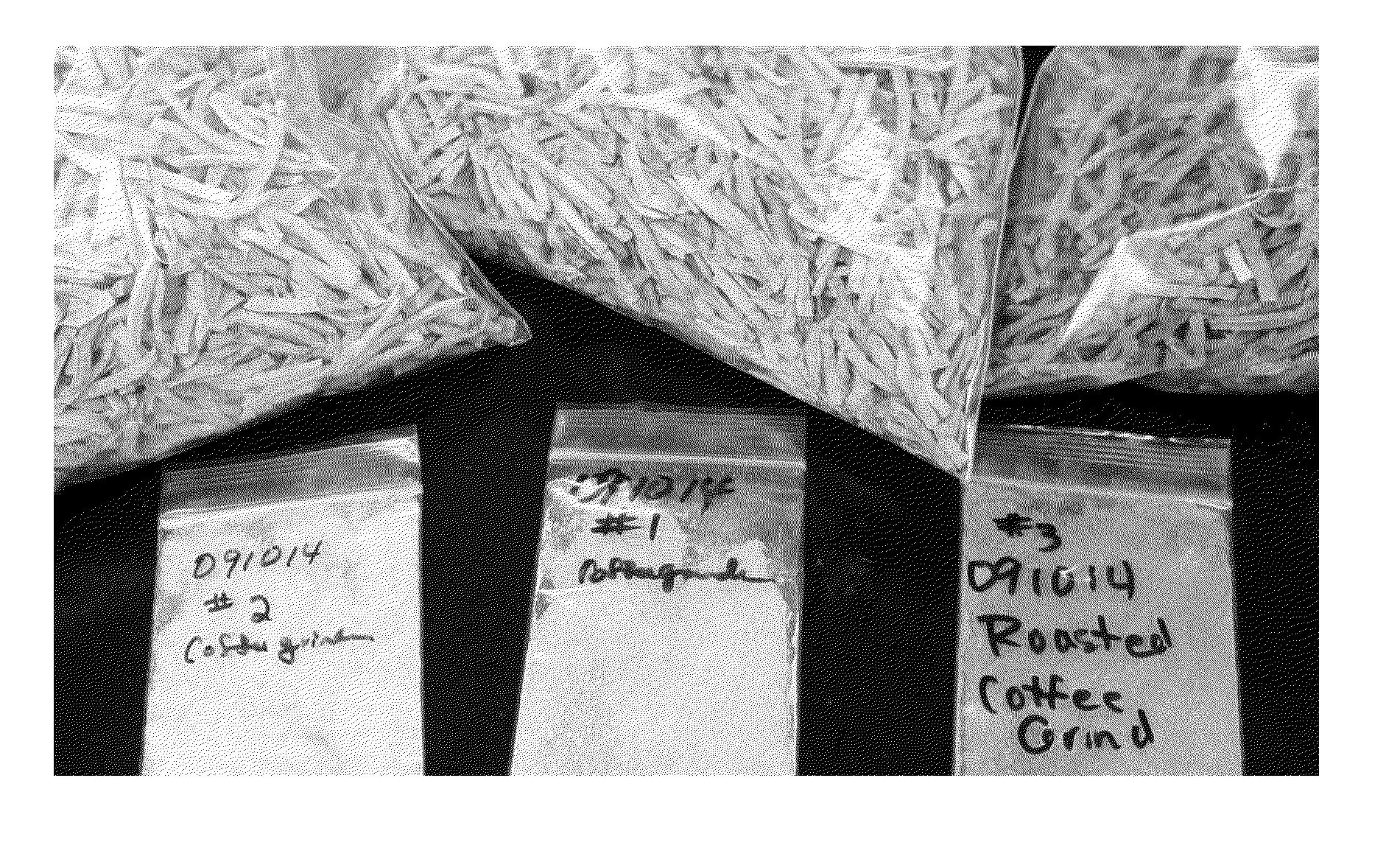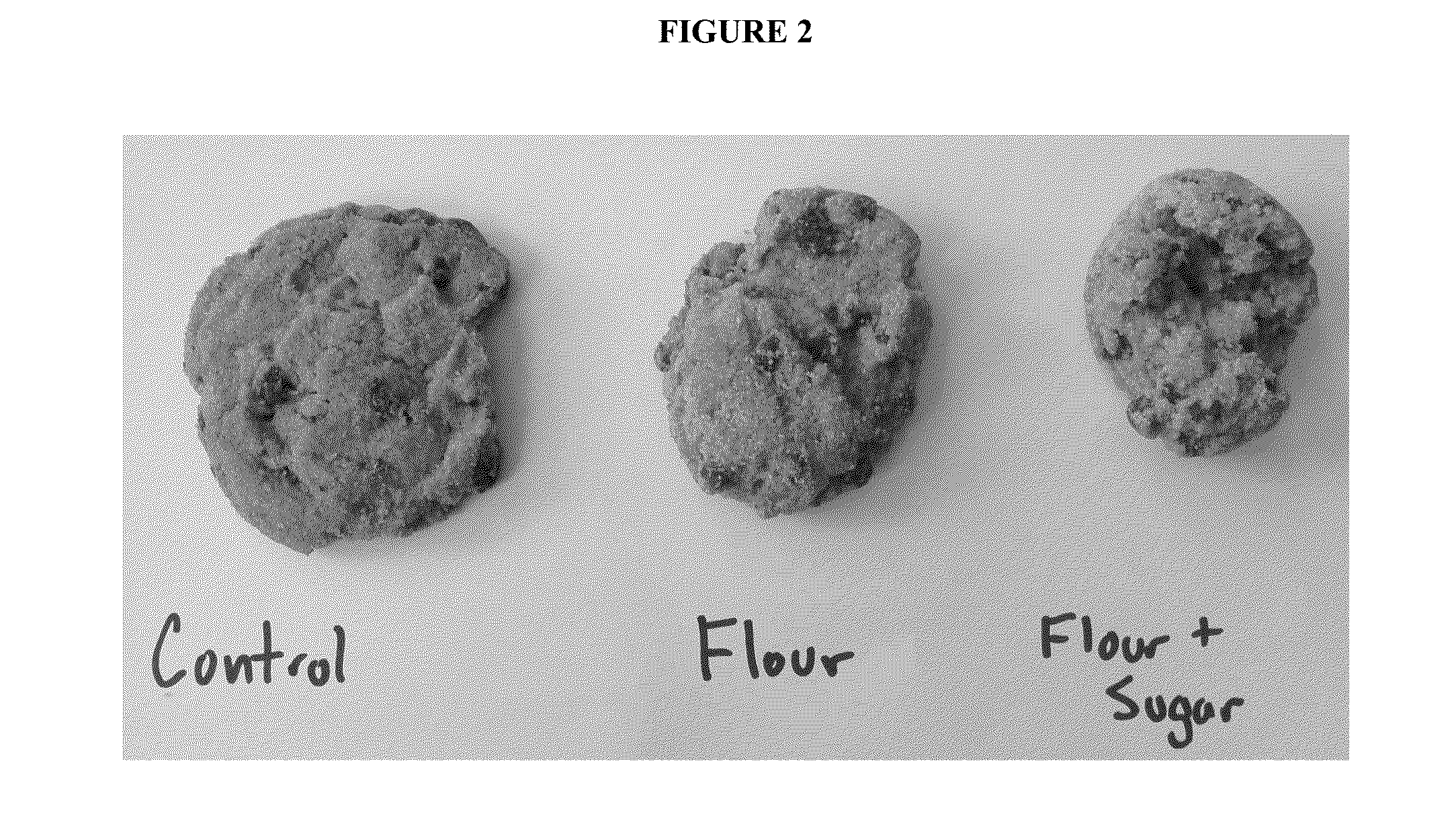Low bitter chicory products
a technology of low bitterness and chicory chips, applied in the field of low bitterness of chicory chips, flour, can solve the problems of limiting the consumption of taproots, making chicory fibers significantly more expensive than cellulose fibers, etc., and achieves the effects of reducing appetite, enhancing calcium absorption, and enhancing magnesium absorption
- Summary
- Abstract
- Description
- Claims
- Application Information
AI Technical Summary
Benefits of technology
Problems solved by technology
Method used
Image
Examples
example 1
Chicory Root Processing for Reducing Bitterness
[0110]GROWING CONDITION. Chicory variety ‘Chrysolite’ was grown in Scottsbluff, Nebr. The chicory seeds were planted in April, 2014, using conventional sugar beet planters. After planting, 120 lbs / acre of nitrogen was applied. The chicory taproots were harvest in September 2014, using conventional sugar beet harvesters modified for collecting chicory taproot.
[0111]HARVESTING CONDITIONS. Roots were collected at the University of Nebraska Panhandle Research & Extension Center in Scottsbluff, Nebr. on Sep. 9, 2014. A tractor outfitted with a harvesting foot was run over a row of root chicory (“roots”). Roots were collected by hand. Knives were used to free loose dirt and to remove the top of the root and greens. Harvested roots were transferred to plastic bins for transport. Roots possessing visible rot were not harvested. Roots were transported at 70° F. for 7 hours to Lincoln, Nebr. The roots were stored overnight with ventilation.
[0112]...
example 2
Fructan Content of Chicory Flour
[0119]The fructan content of three chicory flours were analyzed at the Food Processing Center at the University of Nebraska-Lincoln. The chicory flour samples tested include the following Table 5.
TABLE 5Sample labels, sample colors, and sample numbers.Label on bagColorSample number091114 #4Tan4091014 #7Light brown7091014 #3Brown3
[0120]The chicory flours were analyzed using AOAC Method 999.03, which involves removal of interfering sugars using an enzymatic / chemical process, followed by enzymatic degradation of fructan to its component sugars and colorimetric analysis of the sugars. The results are presented in Table 6.
TABLE 6Fructan content of chicory flour samples. aSample numberMeanStandard deviationLSD grouping b460.90.4A760.30.5A356.10.8Ba Samples were analyzed in quadruplicate.b LSD grouping indicates significant differences using Fisher's least significant different test; samples with different letters are significantly different (p
example 3
Composition Analysis of Chicory Flour
[0121]The composition of a chicory flour sample (091114 #4) was analyzed at Medallion Labs using convention methods. The results are presented in Table 7.
TABLE 7Composition analysis of a chicory flour sample.Assay GroupTestResultsMethod ReferenceCarbohydratesCarbohydrates85.1%Determinationthrough calculationFructose0.165%AOAC: 977.20GlucoseLess than 0.1%AOAC: 977.20Sucrose 2.44%AOAC: 977.20MaltoseLess than 0.1%AOAC: 977.20LactoseLess than 0.1%AOAC: 977.20Total Sugars 2.61%AOAC: 977.20CaloriesCalories366 calories / 100 gDeterminationCalories from Fat 31 calories / 100 gthrough calculationMoisture byMoisture6.378% AOAC: 931.04*Forced Air Oven(130° C. / 1 hr)Ash, OvernightAsh3.614% AOAC: 923.03Protein, by DumasProtein (6.25)3.70%AOAC: 992.15;AACC: 46-30Dietary Fiber,Insoluble Fiber13.6%AOAC: 2009.01Codex DefinitionSoluble Fiber66.0%with Modificationswith ModificationsTotal Dietary Fiber79.6%FatTotal Fat1.17%AOAC: 948.15,922.06, 925.32,950.54, 922.09*
PUM
 Login to View More
Login to View More Abstract
Description
Claims
Application Information
 Login to View More
Login to View More - R&D
- Intellectual Property
- Life Sciences
- Materials
- Tech Scout
- Unparalleled Data Quality
- Higher Quality Content
- 60% Fewer Hallucinations
Browse by: Latest US Patents, China's latest patents, Technical Efficacy Thesaurus, Application Domain, Technology Topic, Popular Technical Reports.
© 2025 PatSnap. All rights reserved.Legal|Privacy policy|Modern Slavery Act Transparency Statement|Sitemap|About US| Contact US: help@patsnap.com



